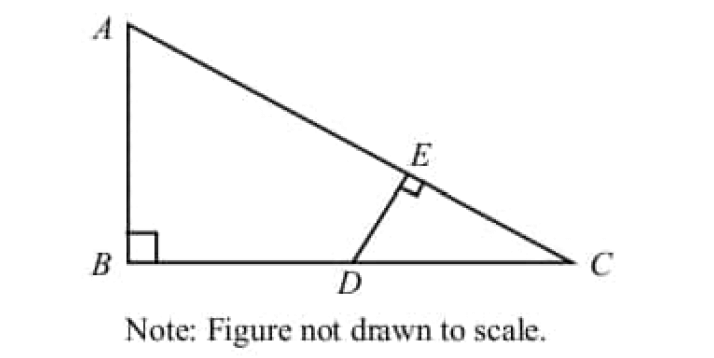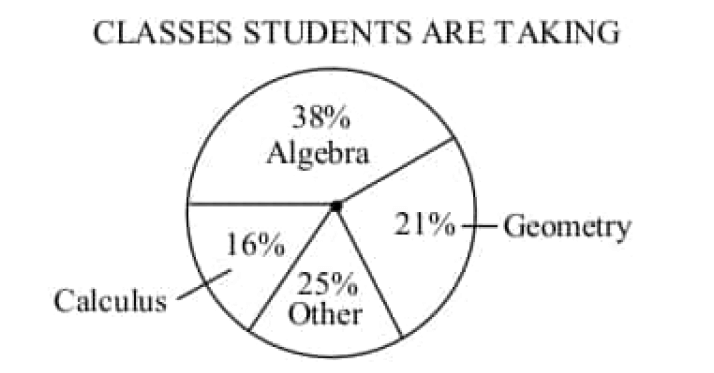EXPLORING ROTATIONS WORKSHEET
Question 1 :
The triangle XYZ has the following vertices X(0, 0), Y(2, 0) and Z(2, 4). Rotate the triangle XYZ 90° counterclockwise about the origin and write the vertices of the image.
Question 2 :
The triangle XYZ has the following vertices X(0, 0), Y(2, 0) and Z(2, 4). Rotate the triangle XYZ 90° clockwise about the origin and write the vertices of the image.
Question 3 :
Based on the rotation in question 1, write the general rule for 90° counterclockwise rotation about the origin.
Question 4 :
Based on the rotation in question 2, write the general rule for 90° clockwise rotation about the origin.
Question 5 :
How are the size and the orientation of the triangle affected by the rotation?

1. Answer :
Step 1 :
Trace triangle xyz and the x- and y-axes onto a piece of paper.
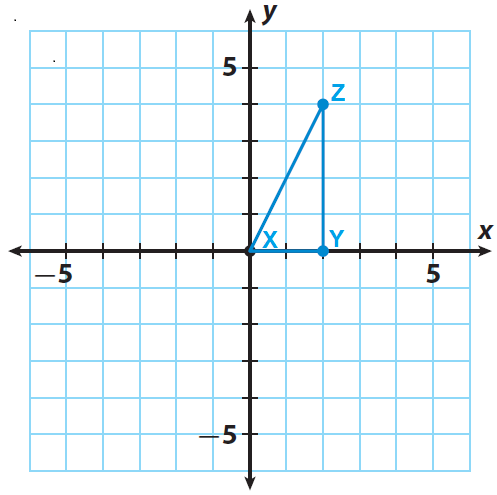
Step 2 :
Rotate your triangle 90° counterclockwise about the origin. The side of the triangle that lies along the x-axis should now lie along the y-axis.
Step 3 :
Sketch the image of the rotation. Label the images of points X, Y, and Z as X', Y', and Z'.
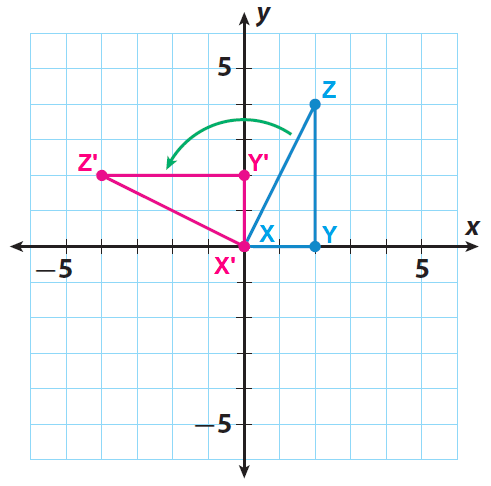
Step 4 :
Write the vertices of the image x'y'z'.
X'(0, 0), Y'(0, 2) and Z'(-4, 2)
2. Answer :
Step 1 :
Trace triangle xyz and the x- and y-axes onto a piece of paper.

Step 2 :
Rotate your triangle 90° clockwise about the origin. The side of the triangle that lies along the x-axis should now lie along the y-axis.
Step 3 :
Sketch the image of the rotation. Label the images of points X, Y, and Z as X", Y", and Z".
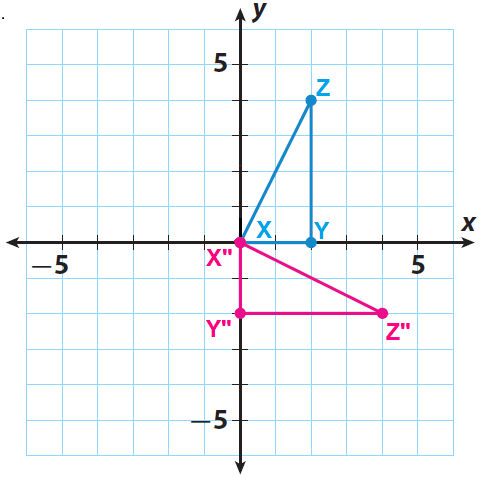
Step 4 :
Write the vertices of the image x"y"z".
X"(0, 0), Y"(0, -2) and Z"(4, -2)
3. Answer :
X(0, 0) ----> X'(0, 0)
Y(2, 0) ----> Y'(0, 2)
Z(2, 4) ----> Z'(-4, 2)
From the above transformations of vertices, we have the following general rule for 90° counterclockwise rotation.
|
Pre-image (x, y) |
Image (After rotation) (-y, x) |
4. Answer :
X(0, 0) ----> X"(0, 0)
Y(2, 0) ----> Y"(0, -2)
Z(2, 4) ----> Z"(4, -2)
From the above transformations of vertices, we have the following general rule for 90° clockwise rotation.
|
Pre-image (x, y) |
Image (After rotation) (y, -x) |
Similarly, we can define general rules for clockwise and counterclockwise rotations about 180°and 270° as given below.
5. Answer :
The size stays the same, but the orientation changes in that the triangle is turned or tilted left – what was 'up' is now 'left'.
Kindly mail your feedback to v4formath@gmail.com
We always appreciate your feedback.
©All rights reserved. onlinemath4all.com
Recent Articles
-
Digital SAT Math Problems and Solutions (Part - 216)
Jul 16, 25 01:28 AM
Digital SAT Math Problems and Solutions (Part - 216) -
Digital SAT Math Problems and Solutions (Part - 215)
Jul 15, 25 01:24 PM
Digital SAT Math Problems and Solutions (Part - 215) -
Digital SAT Math Problems and Solutions (Part - 214)
Jul 14, 25 08:54 PM
Digital SAT Math Problems and Solutions (Part - 214)
